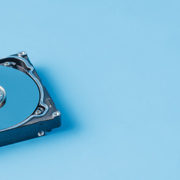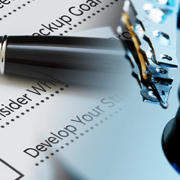5 Server Maintenance Tips and Tricks to Better Support Your Business
Each and every day, you likely go about your daily business without giving your server much thought. They typically operate 24/7 without much hassle, but like all machines, they do require some level of maintenance.
This is why you need to take a proactive approach.
As you monitor and maintain your server, you will be able to help prevent a possible failure — one that could quickly turn into a disaster. To help guide you, we have created a little tips and tricks checklist. That way, you can avoid costly outages and unnecessary headaches.
Consider These 5 Server Maintenance Tips and Tricks
Unlike larger companies, you may not yet have a dedicated IT department. If this is the case, you may be currently weighed down by technical tasks that are somewhat out of your wheelhouse. The following tips and tricks are intended to guide you. However, if you are completely in the dark, it’s best that you seek the assistance of a managed service provider.
In the meantime, consider the following:
Tip #1: Update your OS
This may seem obvious. However, there are many businesses that are using outdated operating systems, leaving their companies vulnerable. All it takes is one attack, like WannaCry, for you to face a highly disruptive, potentially detrimental situation. The key here is to regularly update your operating system so that it supports regular patch releases. If you don’t, you may not have issues for months, even years — but eventually, an unpatched server will catch up with you.
Related: 9 Things You Can Do to Outsmart Ransomware Attacks
Tip #2: Clean your server
If you have your server tucked away in a closet, it’s important to physically clean it on a regular basis. Although quality servers have fairly powerful fans, that does not mean that dirt and dust can’t settle in the server’s case. This will increase the temperature within the case, potentially leading to a range of issues — including a potential fire. If your server has filters, clean them on a regular basis and use compressed air to access hard-to-reach places.
Tip #3: Check for potential hardware errors
Review your company’s system logs in order to identify signs of hardware issues. From network failures to overheating notices, it is important that you’re aware of how your hardware is operating. This is particularly important if your system has not been running as expected recently. However, even if there are not any apparent issues, checking your logs for hardware errors should become a standard part of your server maintenance strategy.
Tip #4: Confirm that your backup server is running properly
You may have already gotten into the habit of checking your backup system on a weekly basis. However, are you actually verifying that your backups are working as expected? Often overlooked, this step is imperative in regards to a solid backup plan. Even if you decide to outsource this task, you should still have a firm grasp on all the elements within your plan, including the schedule, backup location, and recovery times.
Tip #5: Move to the cloud
The cloud has allowed companies to reduce to reduce outages, which is why you should move at least a portion of your infrastructure to the cloud. This step will help you streamline your operations, hosting, data storage, and more — all while increasing speed, flexibility, and overall peace-of-mind.
Still in need of support? Please feel free to contact us regarding your IT service needs.
Also, be sure to read the following helpful resources:












